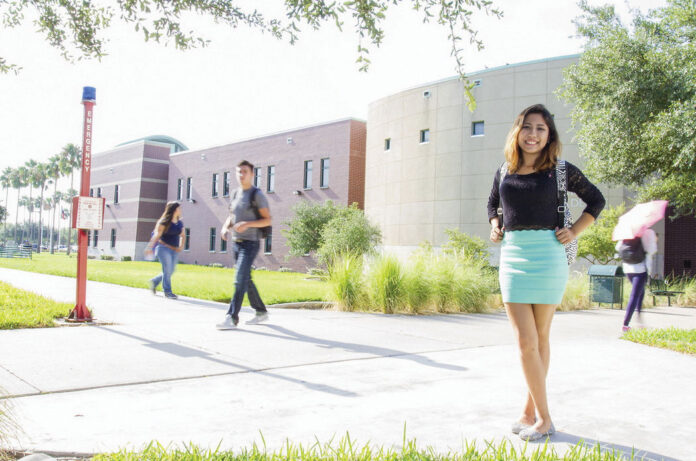McALLEN — As hundreds of college students prepare to celebrate mother’s day weekend by presenting their moms with a college degree, South Texas College officials are in turn celebrating having the biggest cohort of high school students graduating with an associate degree.
The junior college awarded about 1,400 associate degrees to students who still have two weeks before receiving their high school diplomas thanks to dual enrollment courses.
In 2017, the college graduated about 720 students with the two-year associate degree.
A major factor in the increase has been the 29 local high schools that have joined STC’s dual enrollment program by forming early college high school or college academies. Those students begin graduating this year.
Many of the freshmen that were the first generation of the program crossed the stage Friday afternoon to receive the fruit of their labor.
“We started out with just simply 16 students graduating back in 2008 from the academy program and they were all from Rio Grande City,” recalled Nick Gonzalez, STC administrator for high school programs. “It’s been a long process… it take a lot of commitment from the parents, the principals, the districts, because we don’t charge the kids anything but when we provide a teacher to the schools they have to cover it.”
Gonzalez helped found the dual enrollment program at STC and said it’s even more exciting to think that because these academies are already well established there are many students trailing behind.
The college also had nearly 300 students graduating with technical certificates, Gonzalez said. Even those that didn’t acquire a degree will graduate high school with accumulated college credits to save them money and time once they enter college.
“They are ready to go right to college and start taking classes, and more importantly they all graduated from high school,” he said.
When it comes to handling a growing number of students taking the courses, both Gonzalez and Rebecca De Leon, interim dean for dual credit programs and school district partnerships, said they are always assessing the success rates of students.
“As a college we evaluated the program and we upgraded our policies to ensure that student success is in mind,” De Leon said. “We have staff that work one-on-one with the partnering school districts to ensure that students are taking courses that align to their degrees, to make sure they are completing their degrees on time, and to make sure they understand the value.”
The college shares success metrics with the districts, she said, as well as intervening if they see a drop in the student’s grade point average to help them understand how this could affect their future.
Part of instilling the value of the courses starts with limiting the point at which students can enroll in the programs and determining how many courses to take.
Ninth-graders are only allowed to take dual enrollment college courses after their first semester, and even then they are limited to one or two courses, he said. Tenth-graders can only take two classes per semester.
“We work with them and there’s tutoring and things of that sorts to prepare them to be successful when they start taking college courses,” he said. “With that kind of a pattern they have a good way to complete an associate degree if that is what they want.”




